Introduction:
In the world of web application testing, identifying and resolving issues is crucial to ensure the smooth functioning of your application. Virtuoso, an autonomous testing platform, equips testers with powerful troubleshooting and root cause analysis capabilities to efficiently detect and address potential problems. In this blog, we will explore the importance of troubleshooting and root cause analysis in Virtuoso and provide a step-by-step approach to effectively troubleshoot and resolve issues within your web application.
Understanding Troubleshooting and Root Cause Analysis:
Troubleshooting is the systematic process of identifying and resolving problems that may occur during web application testing. When an issue arises, testers leverage Virtuoso’s robust tools to trace the problem back to its source and determine its root cause. By conducting a thorough root cause analysis, testers can prevent similar issues from recurring in the future, thereby enhancing the overall quality of the application.
The Importance of Troubleshooting and Root Cause Analysis in Virtuoso:
- Early Issue Detection: Virtuoso’s troubleshooting capabilities allow testers to identify potential issues early in the testing process, minimising their impact on the final release. Detecting and resolving problems at an early stage saves time, resources, and potential reputation damage.
- Enhanced Application Stability: Root cause analysis helps pinpoint the exact source of problems, enabling testers to make targeted fixes and improve application stability. By addressing the underlying causes, testers can create a more reliable and robust application.
- Reduced Downtime: Swift resolution of issues through root cause analysis reduces downtime and ensures uninterrupted user access to the application. Minimising downtime is critical for maintaining a positive user experience and avoiding financial losses.
- Continuous Improvement: By identifying and addressing recurring issues, Virtuoso empowers testers to continuously improve the application’s performance and functionality. Iterative improvements based on root cause analysis lead to a better user experience and increased customer satisfaction.
Techniques to Troubleshooting and Root Cause Analysis in Virtuoso:
-
Monitor Test Execution:
Observe the test execution process in Virtuoso to identify any unexpected behaviour or errors. Pay attention to any failed checkpoints or abnormal test step events.
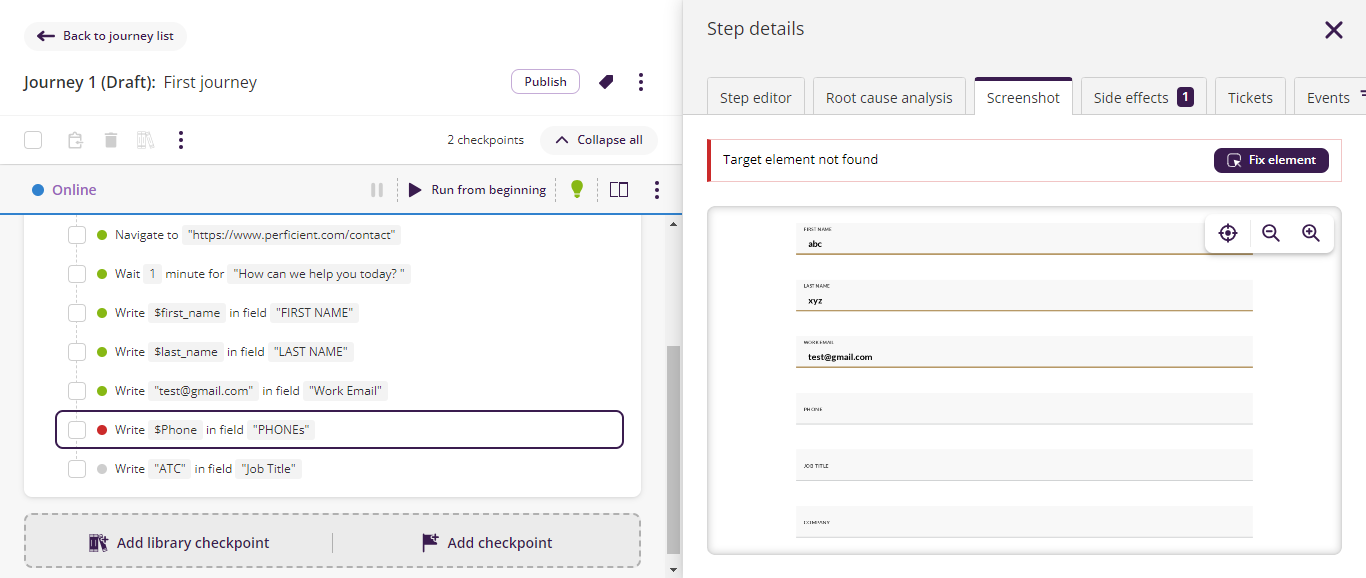
-
Review Execution Report:
Analyse the comprehensive execution report provided by Virtuoso to gain insights into test results and identify any deviations from expected behaviour. Check for failed validations, errors, or anomalies.
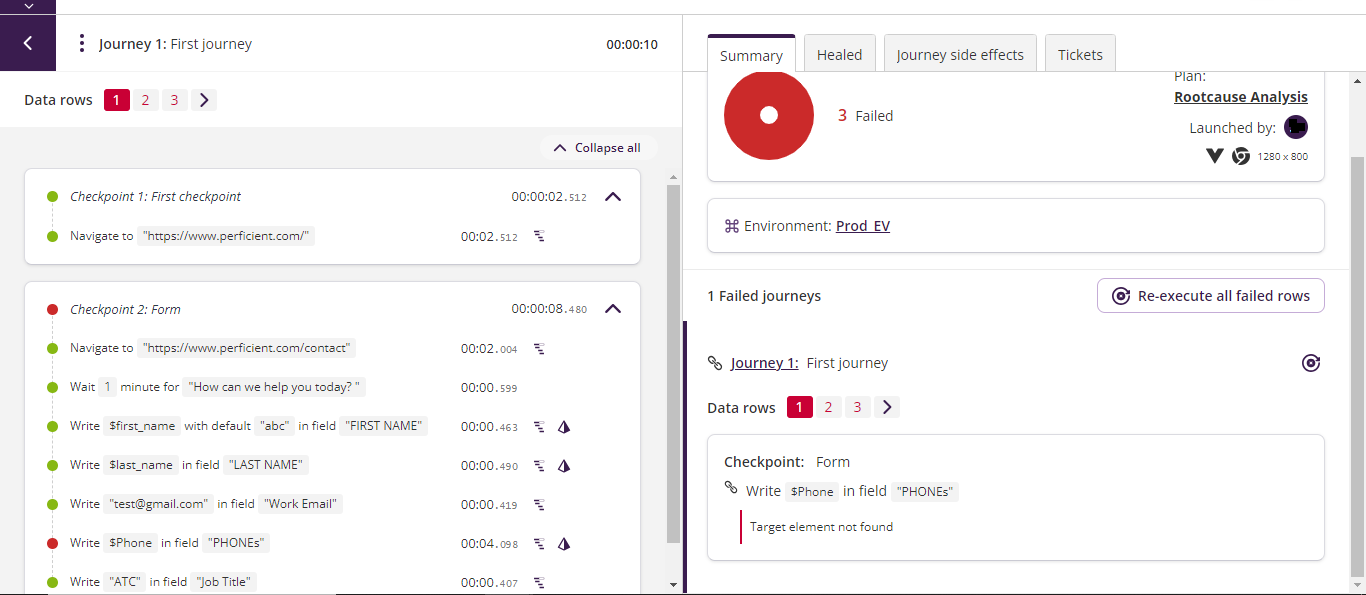
-
Utilise Root Cause Analysis Tools:
Virtuoso offers various tools to aid in root cause analysis, such as network request logs, browser logs, and performance metrics. Dive deeper into these data sources to identify potential issues.
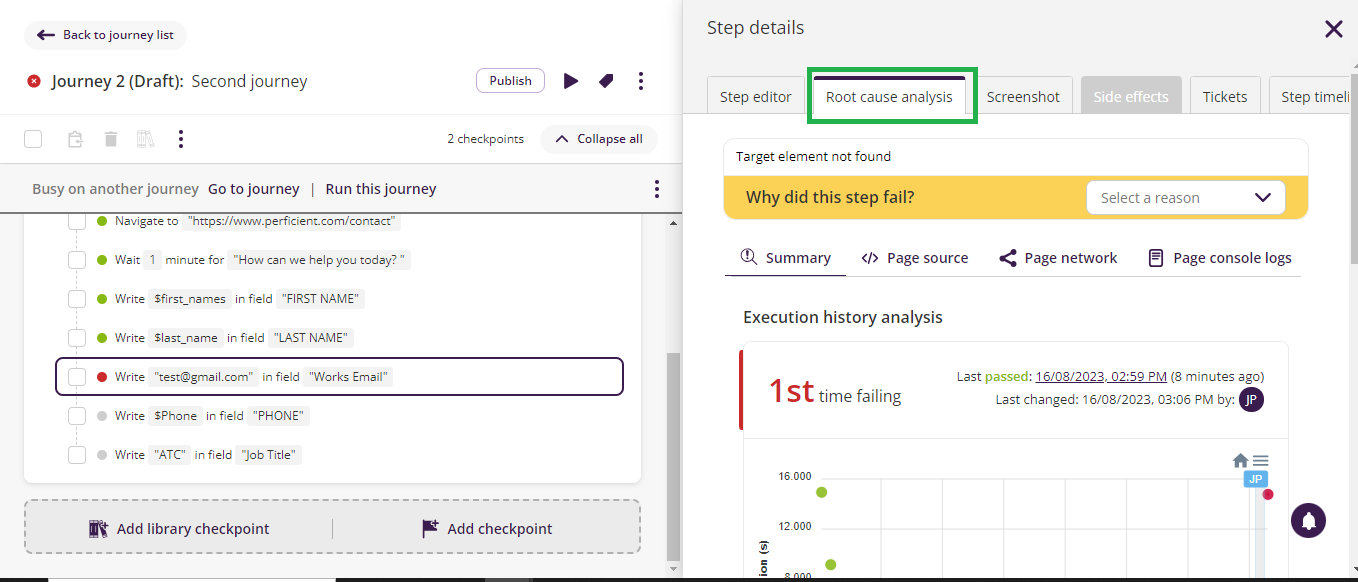
-
Inspect Test Step Events:
Dive deeper into test step events to understand how individual steps contribute to the overall test flow and potential issues. Look for any unexpected or erroneous behavior.
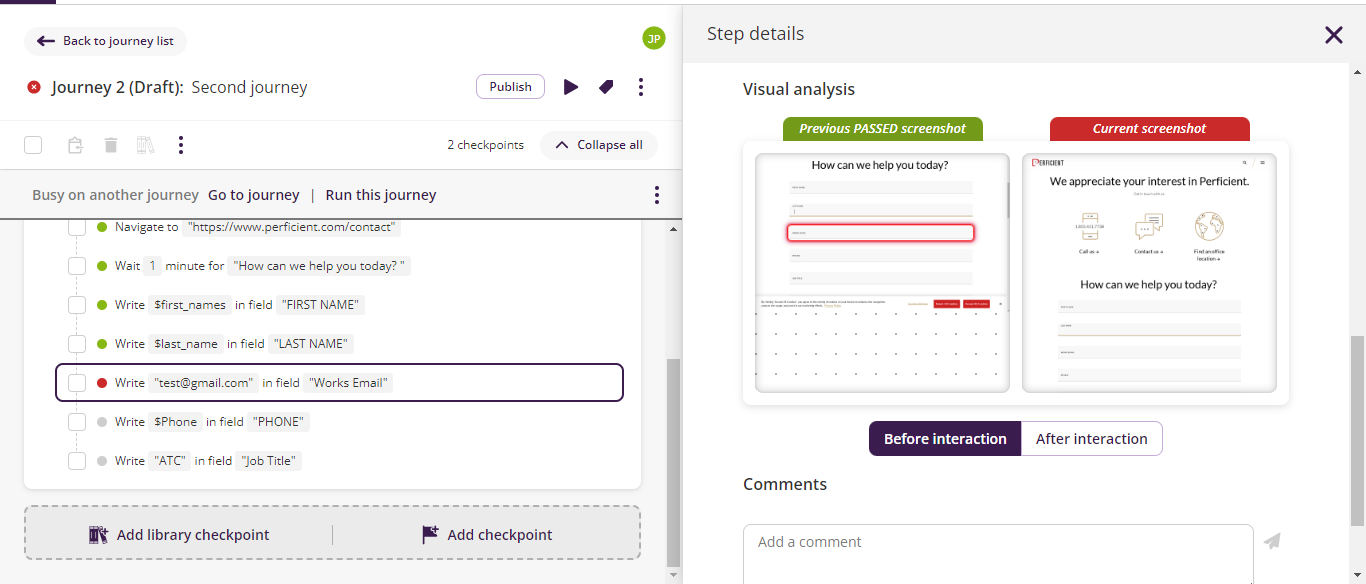
-
Examine Network Requests:
Analyse network requests made during test execution to detect any errors or slow response times from APIs or servers. Check for error codes, long response times, or failed requests.
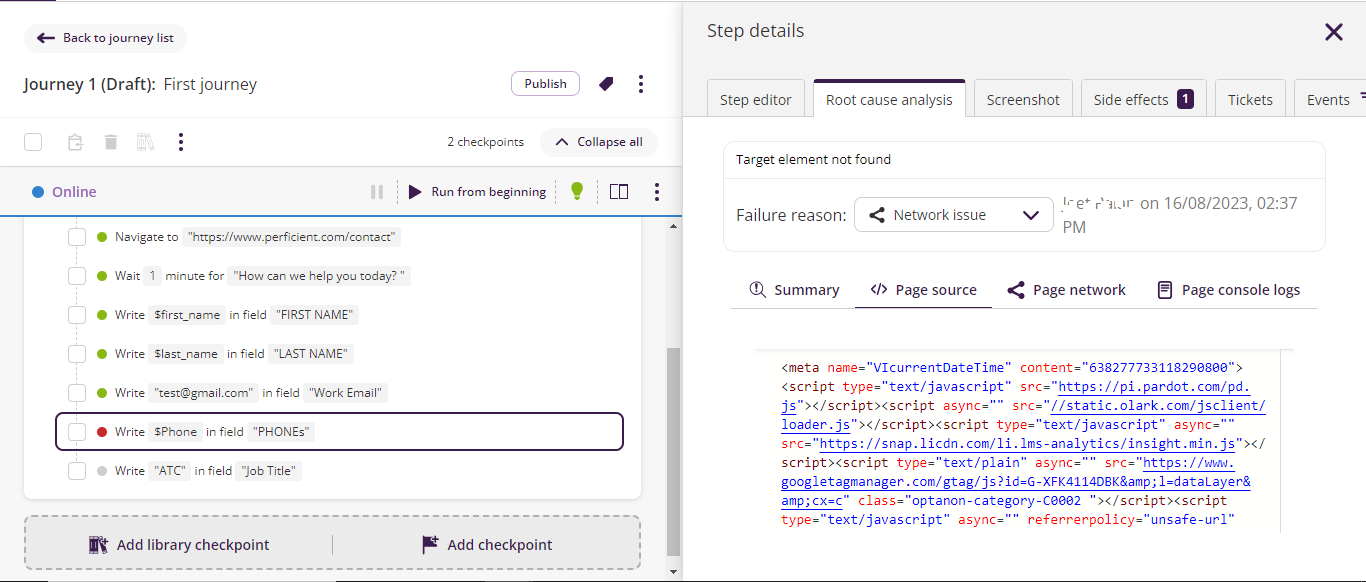
-
Assess Browser Logs:
Inspect browser logs to identify JavaScript errors or other issues that may impact the application’s behaviour. Look for any stack traces, error messages, or warnings.
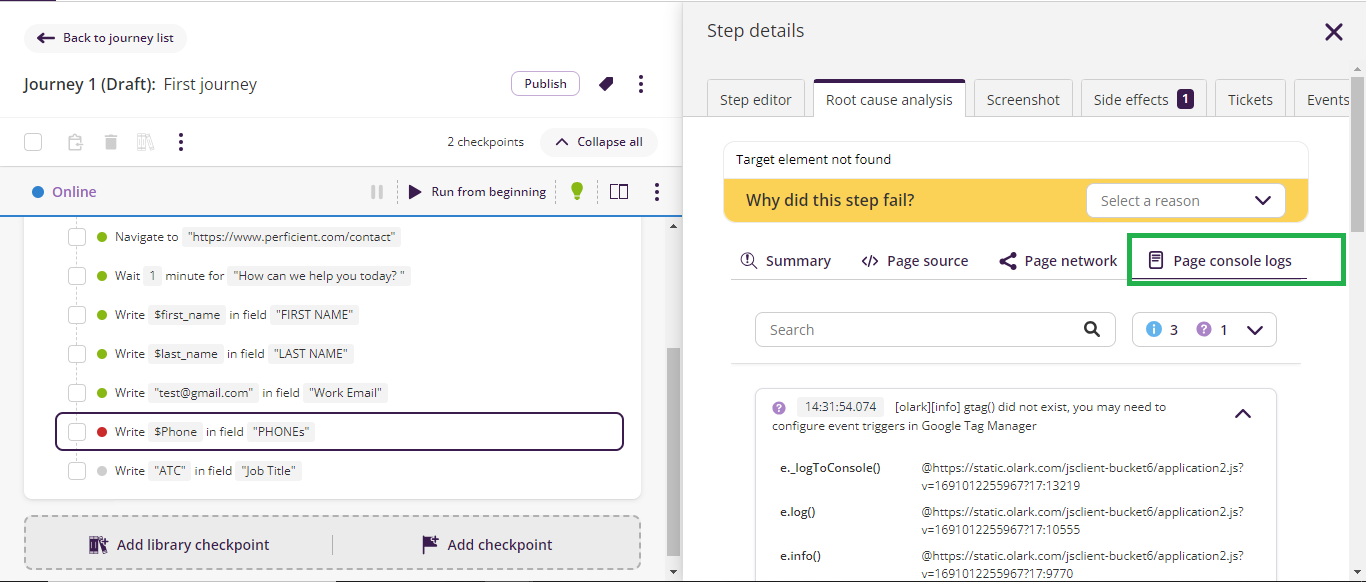
-
Evaluate Performance Metrics:
Utilise performance metrics to gauge the application’s responsiveness and identify any bottlenecks affecting its performance. Pay attention to load times, resource consumption, and server response times.
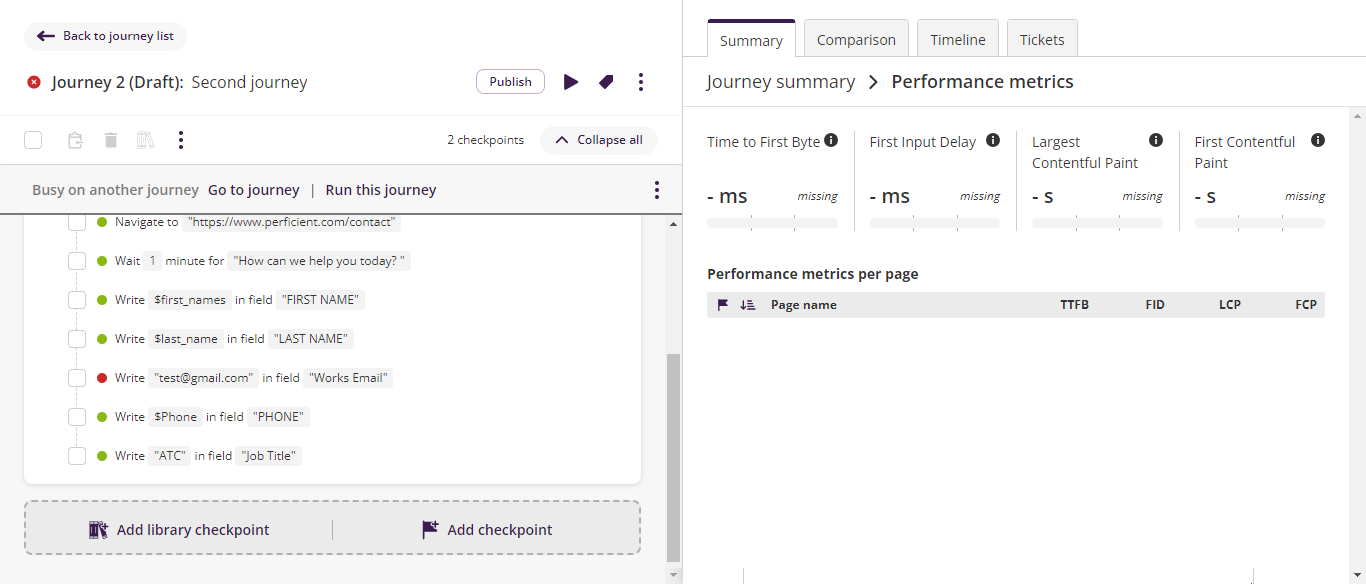
-
Compare with Baselines:
Compare test results with baselines to determine if deviations from expected behaviour exist. Baselines serve as a reference for expected application behaviour.
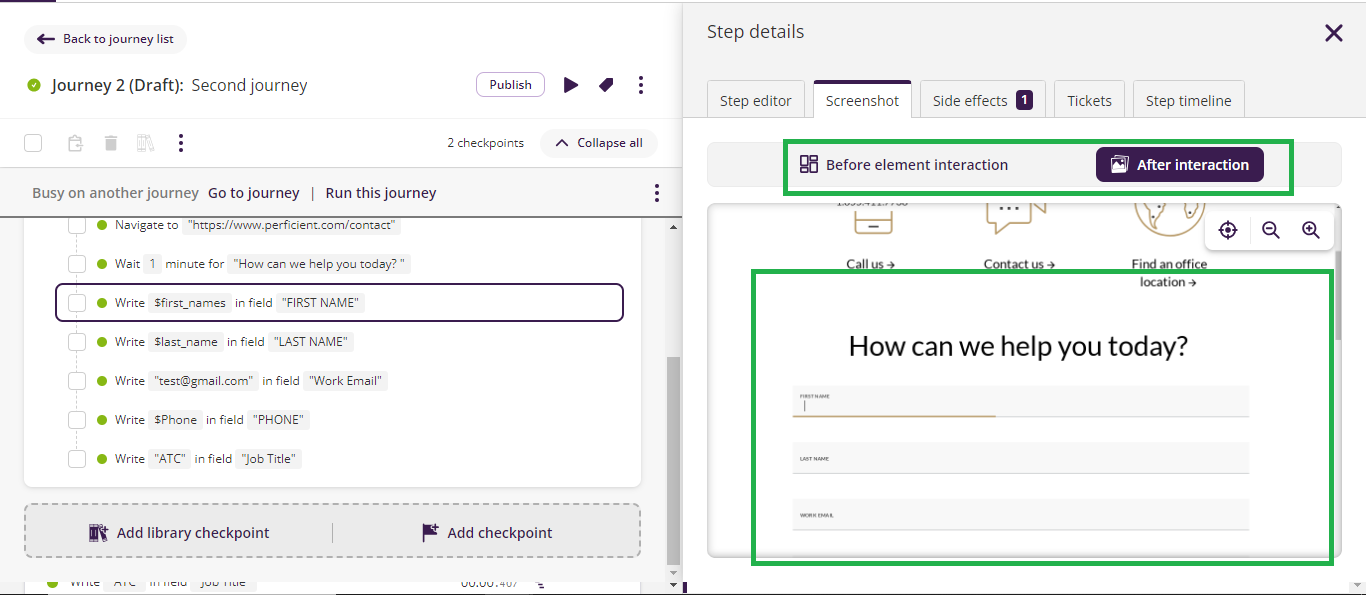
-
Apply Corrections and Rerun Tests: Virtuoso Precision
Utilise Virtuoso’s skills to identify problems and implement solutions based on the knowledge gained from the root cause analysis. Use its simplified testing features to precisely rerun the test suite. You may make sure that the application functions as expected across browsers and devices by checking how Virtuoso’s autonomous testing suite performs after making corrections.
Conclusion:
Troubleshooting and root cause analysis are integral parts of web application testing, and Virtuoso’s comprehensive capabilities empower testers to efficiently identify and resolve issues. By following the step-by-step guide provided in this blog, your organisation can harness the power of Virtuoso to enhance application stability, reduce downtime, and continuously improve the overall quality of your web application.

